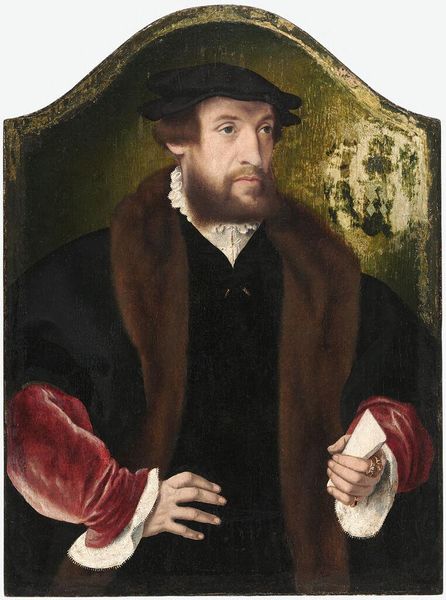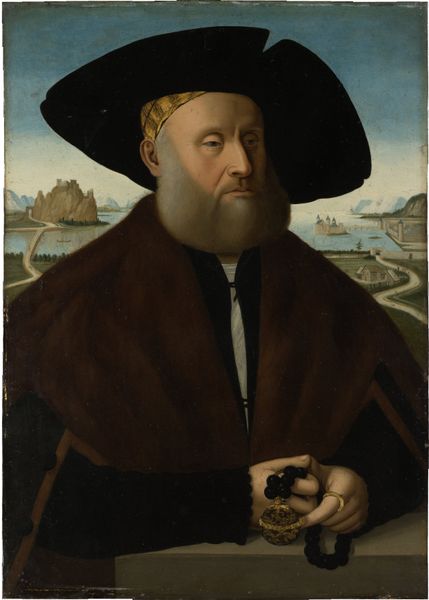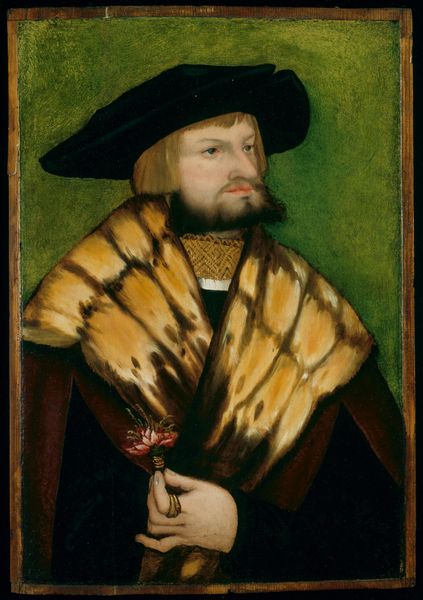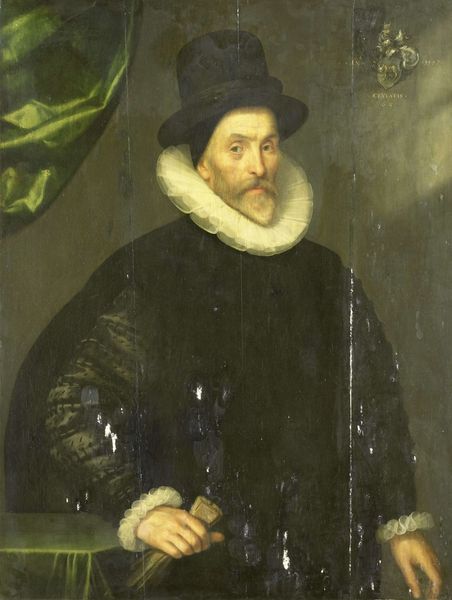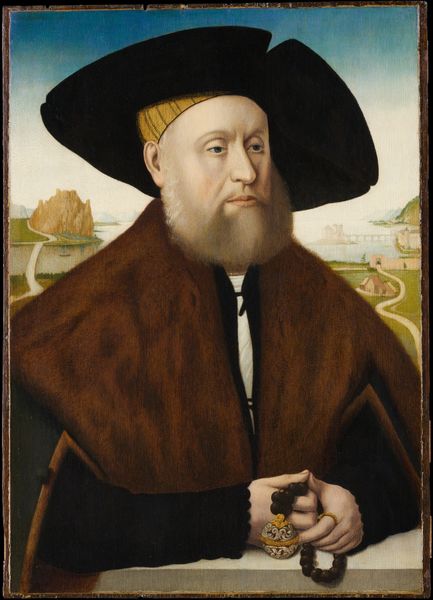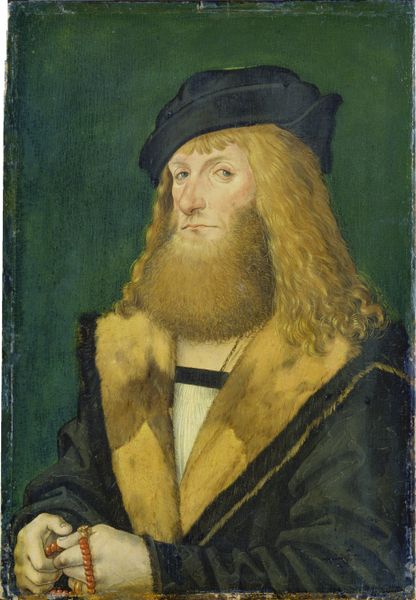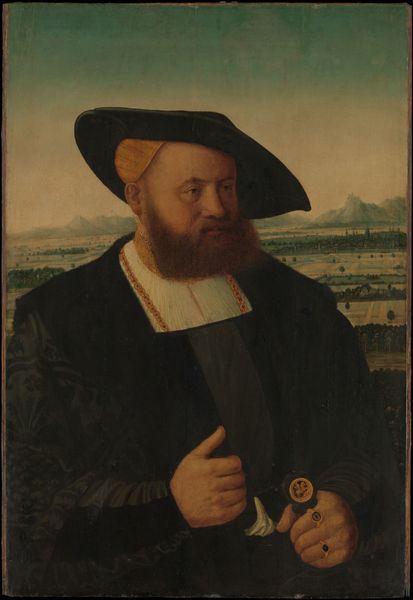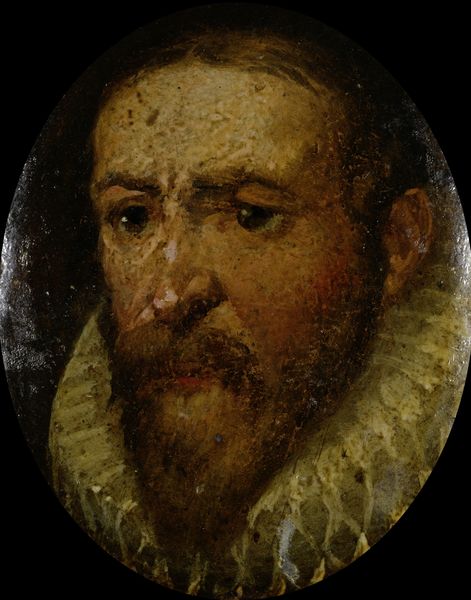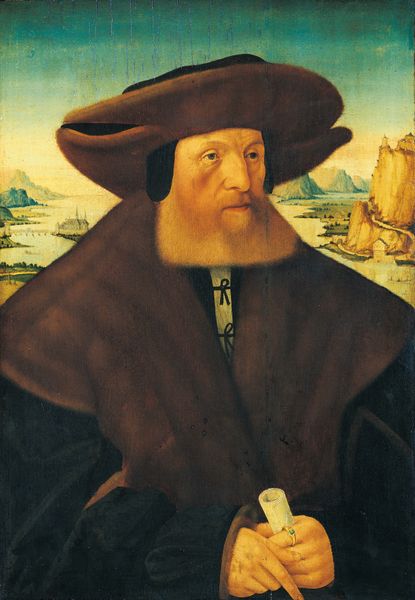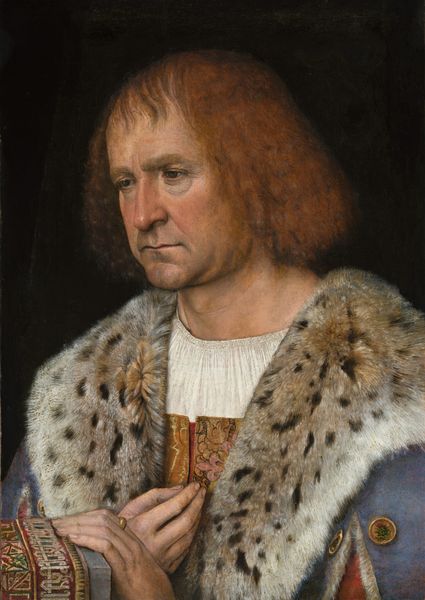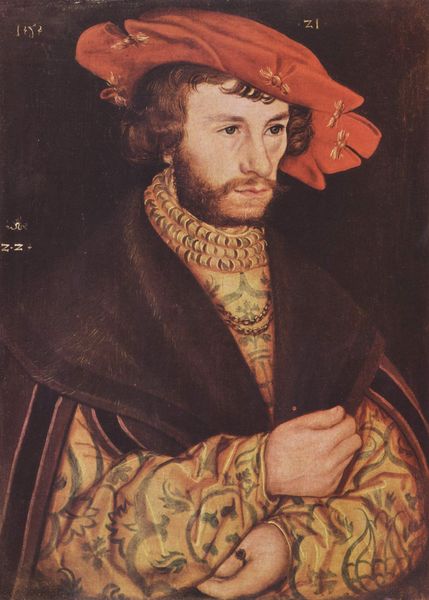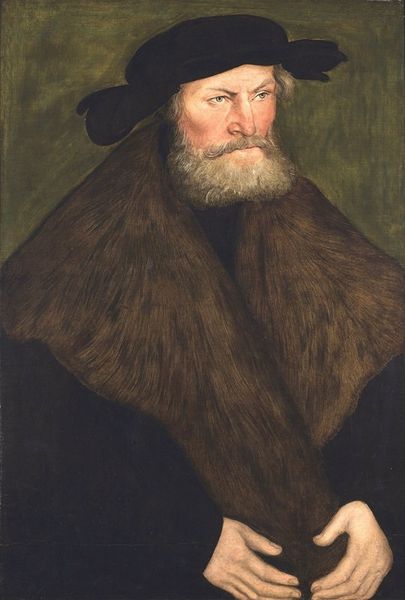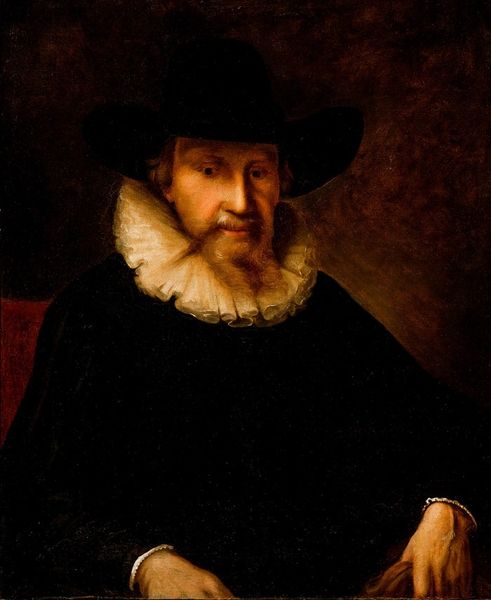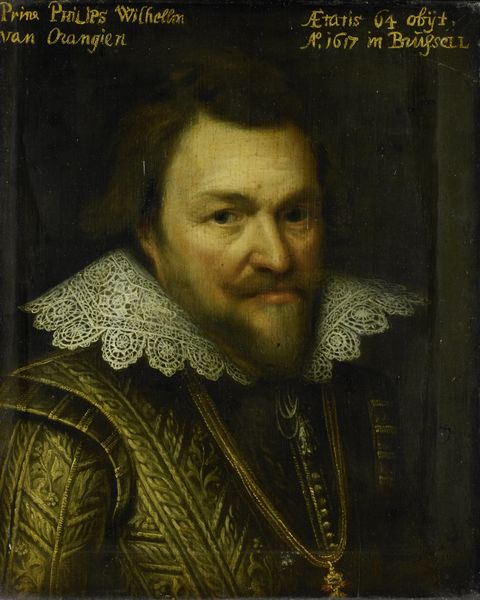
painting, oil-paint
#
portrait
#
painting
#
oil-paint
#
history-painting
#
northern-renaissance
#
italian-renaissance
#
realism
Dimensions: 31 cm (height) x 22 cm (width) (Netto), 38.4 cm (height) x 30.4 cm (width) x 4.2 cm (depth) (Brutto)
Editor: So, here we have Michiel Sittow's "Portrait of the Danish King Christian II," painted around 1514-1515. The medium is oil paint. It’s at the SMK in Copenhagen now. The King looks...intense, almost burdened. I wonder, what stands out to you about this piece? Curator: That’s it exactly—the *weight*. It hits you in the gaze, doesn’t it? Christian II: He was called "the cruel king", a forward-thinker mired in rebellion. Look how Sittow’s captured that… he wasn’t just painting a pretty picture, was he? And there's a melancholic humor too, don't you think? His fashion is amazing--but perhaps you have other impressions? Editor: I do agree! His outfit and the gold trinkets scream wealth and royalty but his expression suggests internal struggle and maybe regret. What about those inscriptions or details on his hat? It looks a bit like he's wearing golden staples or rivets! Curator: Right? Those B’s atop the frame? I wonder aloud… Does that B stand for Burgundy, perhaps? There were intricate marriage alliances at the time, you see. Royal fashion was very political, nothing was just chance. How would this portrait be viewed in its time, versus now, after he died, betrayed by his own uncle… it haunts me. Editor: That is interesting… the 'B' really offers another story to his image, almost hinting at this whole background you mention of betrayal and power struggles. Knowing this, his outfit screams not just wealth, but maybe alliance. I never would've caught that without your input. Thank you! Curator: My pleasure entirely! Perhaps we could create our own fashion line informed by these sorts of allegories and hints? A king can dream, can't he?
Comments
statensmuseumforkunst almost 2 years ago
⋮
What did Christian II look like? Many portraits of him have survived, and they are very different from each other. It can be difficult to accept that the model is allegedly the same person in all the paintings. The only recurring feature is the beard. The Renaissance saw a growing interest in human beings as individuals and in their worldly, material aspects. Artists began to see each individual person, reproducing what they saw by means of illusionistic effects. Today, we think that the portraits begin to look like their models. But who do they actually look like? Michael Sittow was an excellent portrait painter. He painted Christian II in a way that convinces us that the king looked exactly like this. Thus, Sittow lived up to his era's ideals stipulating that a portrait must seem compellingly real. Yet, the real task was to satisfy the commissioner's desire to convey a specific message. Here, Christian II wished to com municate that Denmark had a handsome, strong willed king.
Join the conversation
Join millions of artists and users on Artera today and experience the ultimate creative platform.
statensmuseumforkunst almost 2 years ago
⋮
The first works of art acquired by the Danish kings were presumably royal portraits. For example, Michel Sittow’s portrait of Christian II undoubtedly belonged to the king himself. This is the first artist of international significance to be featured in the collection. Sittow, who is presumed to have been a student of Hans Memling in Brügge, worked for the leading noble houses of Europe. The portrait reflects a king whose close family ties to the imperial Habsburg court drew in into the centre of European art and culture. On his subsequent travels and exile the king came into direct contact with the cultural centres of Europe. The heritage of Christian II also includes a set of prints by Dürer, who gave the King these prints as a gift in 1521. The prints formed the basis for The Royal Collection of Graphic Arts, which was founded in 1831.
